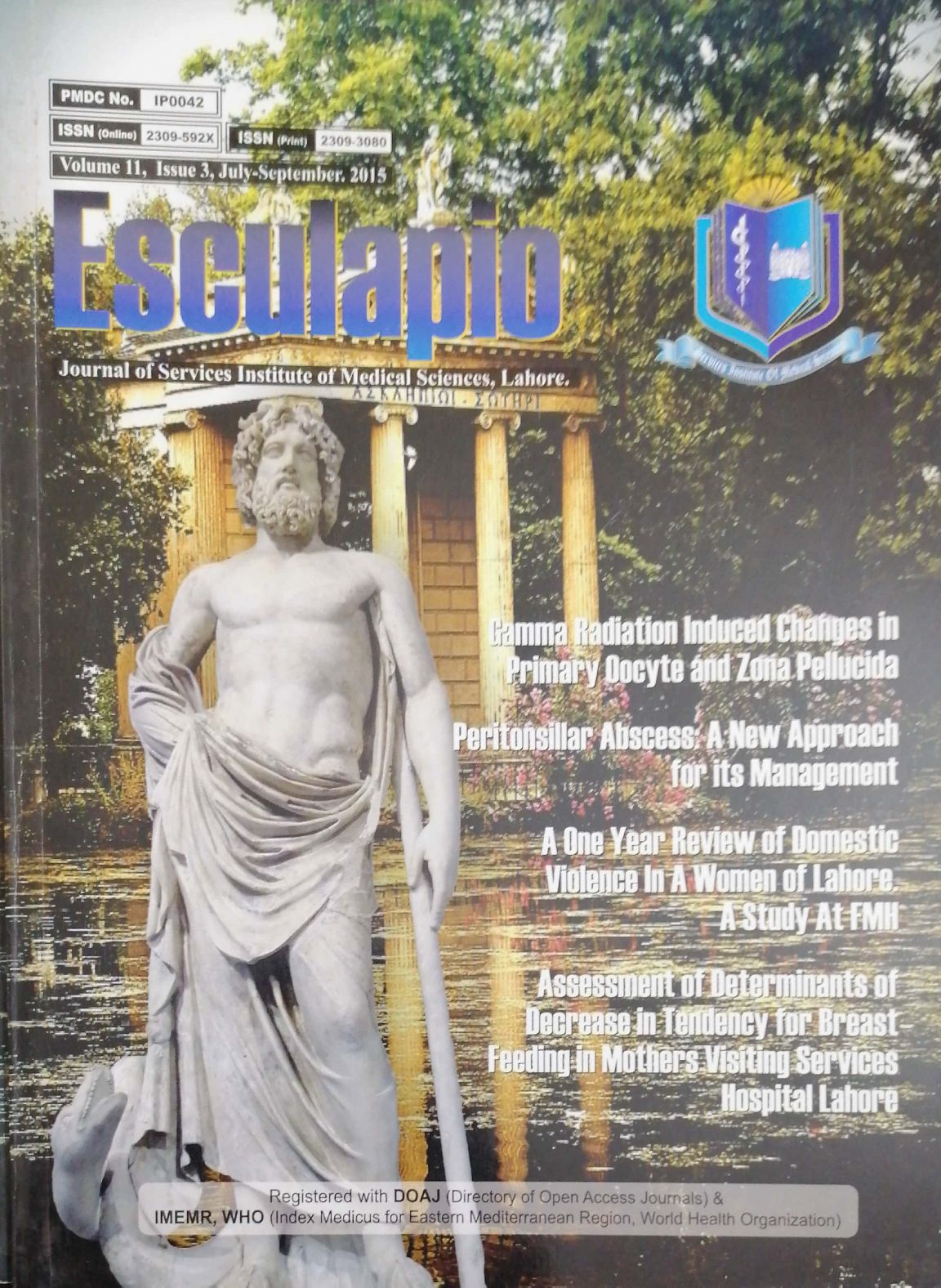Outcome of Treatment of Fistula- in- ANO
DOI:
https://doi.org/10.51273/esc15.71135Keywords:
Fistula in ANO, incontinence, recurrenceAbstract
Objective: To determine the frequency of recurrence and incontinence as outcome from surgery for fistula in ANO.
Material and Methods: We reviewed the records of consecutive series of 30 patients who underwent fistulotomy, fistulectomy and two stage seton fistulotomy between April 2006 to April 2007. Preoperative continance status of every patient checked before surgical intervention. To assess the outcome of treatment of fistula in ANO. Follow-up in outpatient clinic advised as scheduled visit on 1st, 2nd, 4th, 6th and 12th week, continence was evaluated using the validated Saint Marks score (Vaizey scale). The outcome variables analyzed were recurrence and incontinence. Fistula were intersphincteric in 12 patients, trans-sphincteric in 17 patients and extrasphincteric in 1 patient. Procedures included fistulotomy (n=12), fistulectomy (n=12) and two
stage seton fistulotomy (n=6).
Results: The study examined 30 patients undergone surgical treatment for fistula in ANO. There
were 22 (73.3%) males and 8 (26.7%) males. The mean age of patients was 36 + 12.24 years with
ranges between 16 60 years. About 12 (40%) patients have low intersphincteric fistula. About 17
patients have transphincteric and 11 (36.66%) have low transphincteric and 6 (20%) patient have
high transphincteric. Nearly equal number 12 (40%) patient were reported with fustulotomy and
fistulectomy.
Conclusion: For low and simple fistulas, effective treatment is by fistulotomy, when minimal
anal sphincter is involved fistulectomy is also safe but has to be performed with great care,
incidence of impaired continence was lower in fistulotomy group of patients as well as recurrence
rate is also lower than fistulectomy group. Those patients who had multiple abscess drainage or
previous fistula repairs and patient with high fistula and infection. Avoiding the excessive
sphincter cut in these patients would be wise to use a two stage seton fistulotomy. This is involved
the insertion of loose seton for abscess drainage followed by scheduled secondary fistulotomy










